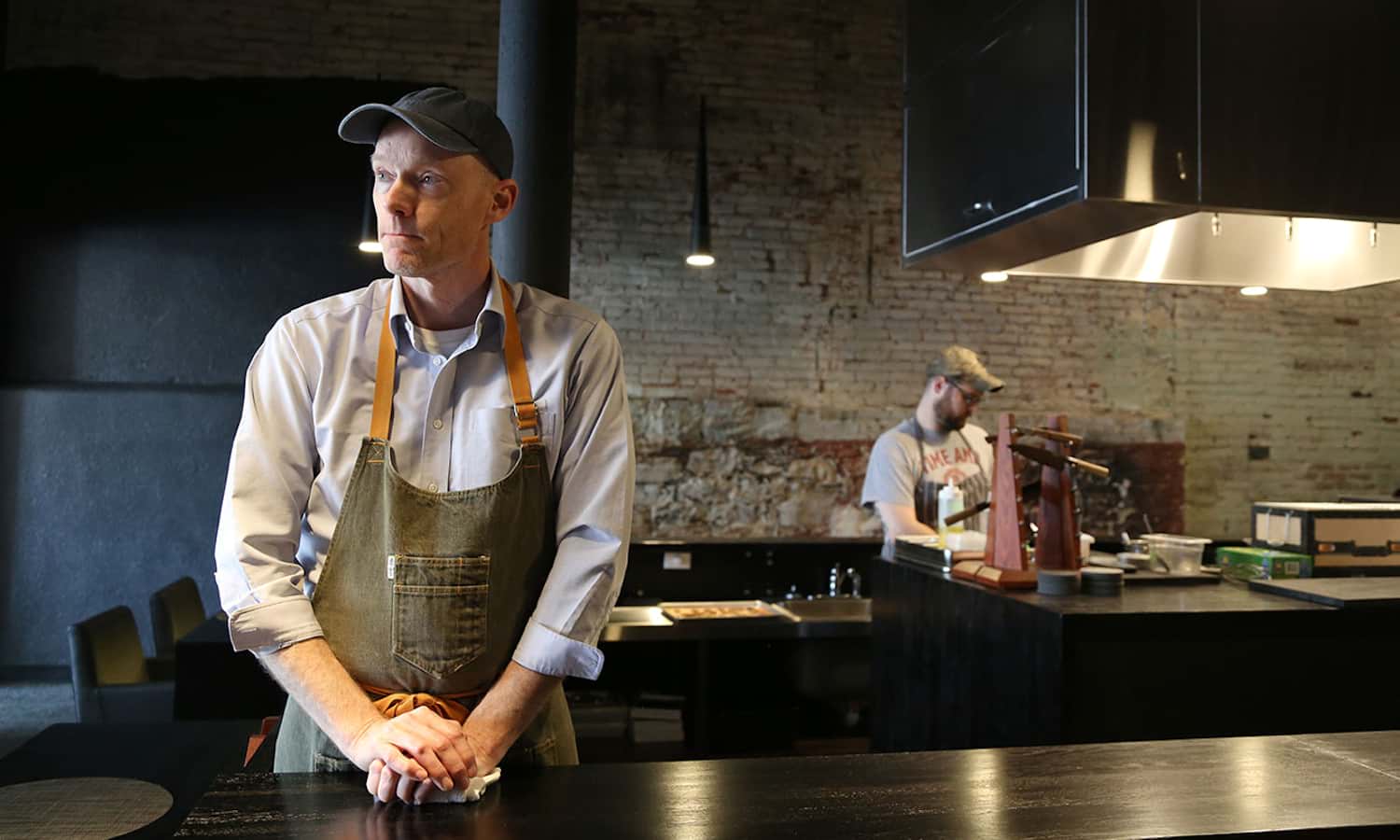Chef Rob Connoley is working with farmers, archivists, and Indigenous communities to try to define and revive Ozark cuisine at his restaurant Bulrush in St. Louis, MO. Connoley hopes to increase biodiversity while connecting people back to the land.
Bulrush uses rare ingredients such as Ice Cream Watermelon, Cushaw squash, and near-extinct livestock species such as Mulefoot hog. With modern techniques, Connoley works to reimagine these traditional ingredients.
When first establishing Bulrush, Connoley looked to the past to get a better understanding of what Ozark food really is. He traveled to public libraries, universities, and city archives to learn the region’s food culture. With the help of interns, he searched through first-hand sources of letters and journals, archaeological data, documents such as shipping records, and agricultural sales receipts.
The Ozarks, also known as the Ozark Plateau, is a region shared between Missouri, Arkansas, Oklahoma, and some parts of Kansas. Between the 1820s to the 1870s, the Indigenous groups of Osage and Cherokee people began interacting with Euro-Appalachian settlers and enslaved people. These groups only used food they could hunt, forage, or grow.
“I decided to look specifically at that point in time when the Osage people first began interacting with settlers and the enslaved,” Connoley tells Food Tank. “That moment when these three cultures first came together and created foods and celebrations is the clearest picture I can imagine for Ozark cuisine.”
Connoley limited his research to this period because after the 1870s, trains reached the area, and the Ozarks saw the influence of other cultures and cuisines. “Everything after [1870] is an evolution from that time point,” says Connoley.
At Bulrush, Connoley not only incorporates Indigenous species and local foods into his dishes, but he also provides diners with the historical context of the ingredients to help them engage more fully with Ozark traditions.
“I come from the old Michael Pollan school of thought about why local is important… It’s not just this fad or coolness of supporting the local economy, to me it is about biodiversity, and as a chef, it is about flavor diversity.”
Connoley shares the most exciting discovery from his research is an inventory from a seed store in 1841. It lists 95 different plants that were sold in the area at the time, and of those, 25 are specialty seeds no longer readily available. In partnership with Seed Savers Exchange and Bakers Creek Seeds, Connoley has been able to get 23 of those varieties that have not been grown in generations, into the hands of a dozen farmers.
To help with this process, Connoley is also working with Tosha Phonix, a local activist and food justice organizer who introduced Connoley to local Black growers. These growers are helping Bulrush grow traditional seed varieties. According to Connoley, this partnership allows Bulrush to provide farmers any resources they may need, including funds, tools, or access to seed bank networks.
“Our role is focused on getting the seeds back into the market,” says Connoley. “Time will tell what fruit this bears, but at the very least we’ll be able to compare what we know from the past to what is being done today in terms of food, growing, and the role of food in culture.”
Over the past 30 years, Connoley says he has seen a decrease in produce diversity at farmers markets. But he believes that projects like these have the potential to renew people’s interest in farmers markets and foods.
“When you can move a consumer beyond eating for sustenance to eating for passion, all sorts of amazing things can happen,” Connoley tells Food Tank. “By putting a lens on these seeds, I believe we can instill a sense of pride and strengthen connections to an area that has a long and important place in our country’s development.”
Photo courtesy of Rob Connoley.













